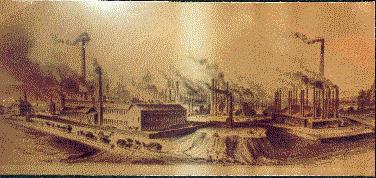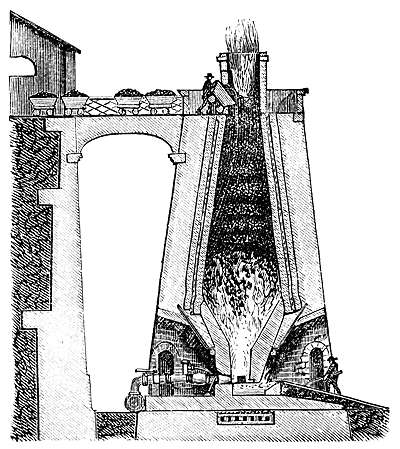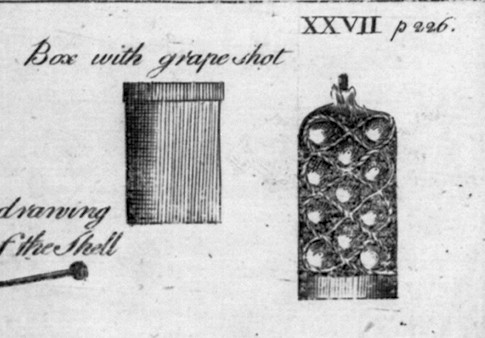|
68-pounder
The 68-pounder cannon was an artillery piece designed and used by the British Armed Forces in the mid-19th century. The cannon was a smoothbore muzzle-loading gun manufactured in several weights, the most common being , and fired projectiles of . Colonel William Dundas designed the 112 cwt version in 1841 and it was cast the following year. The most common variant, weighing 95 cwt, dates from 1846. It entered service with the Royal Artillery and the Royal Navy and saw active service with both arms during the Crimean War. Over 2,000 were made and it gained a reputation as the finest smoothbore cannon ever made. The gun was produced at a time when new rifled and breech loading guns were beginning to make their mark on artillery. At first the 68-pounder's reliability and power meant that it was retained even on new warships such as HMS ''Warrior'', but eventually new rifled muzzle loaders made all smoothbore muzzle-loading guns obsolete. However, the large surplus stocks of 68 ... [...More Info...] [...Related Items...] OR: [Wikipedia] [Google] [Baidu] |
HMS Warrior (1860)
HMS ''Warrior'' is a 40-gun steam-powered armoured frigate"Ironclad" is the general term for armoured warships of this period. Armoured frigates were initially designed for the same role as traditional wooden frigates; this later changed as the size and expense of these ships forced them to be used in the line of battle. built for the Royal Navy in 1859–1861. She was the name ship of the ''Warrior''-class ironclads. ''Warrior'' and her sister ship were the first armour-plated, iron-hulled warships, and were built in response to France's launching in 1859 of the first ocean-going ironclad warship, the wooden-hulled ''Gloire''. ''Warrior'' conducted a publicity tour of Great Britain in 1863 and spent her active career with the Channel Squadron. Obsolescent following the 1873 commissioning of the mastless and more capable HMS ''Devastation'', she was placed in reserve in 1875, and was "paid off" – decommissioned – in 1883. She subsequently served as a storeship and de ... [...More Info...] [...Related Items...] OR: [Wikipedia] [Google] [Baidu] |
Muzzleloader
A muzzleloader is any firearm into which the projectile and the propellant charge is loaded from the muzzle of the gun (i.e., from the forward, open end of the gun's barrel). This is distinct from the modern (higher tech and harder to make) designs of breech-loading firearms. The term "muzzleloader" applies to both rifled and smoothbore type muzzleloaders, and may also refer to the marksman who specializes in the shooting of such firearms. The firing methods, paraphernalia and mechanism further divide both categories as do caliber (from cannons to small-caliber palm guns). Modern muzzleloading firearms range from reproductions of sidelock, flintlock and percussion long guns, to in-line rifles that use modern inventions such as a closed breech, sealed primer and fast rifling to allow for considerable accuracy at long ranges. Modern mortars use a shell with the propelling charge and primer attached at the base. Unlike older muzzleloading mortars, which were loaded the same way as ... [...More Info...] [...Related Items...] OR: [Wikipedia] [Google] [Baidu] |
Cannon Diagram
A cannon is a large- caliber gun classified as a type of artillery, which usually launches a projectile using explosive chemical propellant. Gunpowder ("black powder") was the primary propellant before the invention of smokeless powder during the late 19th century. Cannons vary in gauge, effective range, mobility, rate of fire, angle of fire and firepower; different forms of cannon combine and balance these attributes in varying degrees, depending on their intended use on the battlefield. A cannon is a type of heavy artillery weapon. The word ''cannon'' is derived from several languages, in which the original definition can usually be translated as ''tube'', ''cane'', or ''reed''. In the modern era, the term ''cannon'' has fallen into decline, replaced by ''guns'' or ''artillery'', if not a more specific term such as howitzer or mortar, except for high-caliber automatic weapons firing bigger rounds than machine guns, called autocannons. The earliest known depiction ... [...More Info...] [...Related Items...] OR: [Wikipedia] [Google] [Baidu] |
Naval Artillery In The Age Of Sail
Naval artillery in the Age of Sail encompasses the period of roughly 1571–1862: when large, sail-powered wooden naval warships dominated the high seas, mounting a large variety of types and sizes of cannon as their main armament. By modern standards, these cannon were extremely inefficient, difficult to load, and short ranged. These characteristics, along with the handling and seamanship of the ships that mounted them, defined the environment in which the naval tactics in the Age of Sail developed. Firing Firing a naval cannon required a great amount of labour and manpower. The propellant was gunpowder, whose bulk had to be kept in the magazine, a special storage area below deck for safety. ''Powder boys'', typically 10–14 years old, were enlisted to run powder from the magazine up to the gun decks of a vessel as required. A typical firing procedure follows. A wet swab was used to mop out the interior of the barrel, extinguishing any embers from a previous firing whic ... [...More Info...] [...Related Items...] OR: [Wikipedia] [Google] [Baidu] |
Low Moor Iron Works
The Low Moor Ironworks was a wrought iron foundry established in 1791 in the village of Low Moor about south of Bradford in Yorkshire, England. The works were built to exploit the high-quality iron ore and low-sulphur coal found in the area. Low Moor made wrought iron products from 1801 until 1957 for export around the world. At one time it was the largest ironworks in Yorkshire, a major complex of mines, piles of coal and ore, kilns, blast furnaces, forges and slag heaps connected by railway lines. The surrounding countryside was littered with waste, and smoke from the furnaces and machinery blackened the sky. Today Low Moor is still industrial, but the pollution has been mostly eliminated. Background The ironworks depended on the excellent resources of high-quality coal and iron ore found in the vicinity. The "better bed" coal came from a seam about thick resting on hard sandstone. This coal is particularly low in sulphur. About above this coal seam there is a layer of "black ... [...More Info...] [...Related Items...] OR: [Wikipedia] [Google] [Baidu] |
Low Moor Ironworks
The Low Moor Ironworks was a wrought iron foundry established in 1791 in the village of Low Moor about south of Bradford in Yorkshire, England. The works were built to exploit the high-quality iron ore and low-sulphur coal found in the area. Low Moor made wrought iron products from 1801 until 1957 for export around the world. At one time it was the largest ironworks in Yorkshire, a major complex of mines, piles of coal and ore, kilns, blast furnaces, forges and slag heaps connected by railway lines. The surrounding countryside was littered with waste, and smoke from the furnaces and machinery blackened the sky. Today Low Moor is still industrial, but the pollution has been mostly eliminated. Background The ironworks depended on the excellent resources of high-quality coal and iron ore found in the vicinity. The "better bed" coal came from a seam about thick resting on hard sandstone. This coal is particularly low in sulphur. About above this coal seam there is a layer of "black ... [...More Info...] [...Related Items...] OR: [Wikipedia] [Google] [Baidu] |
Fuse (explosives)
In an explosive, pyrotechnics, pyrotechnic device, or military munition, a fuse (or fuze) is the part of the device that initiates function. In common usage, the word fuse is used indiscriminately. However, when being specific (and in particular in a military context), the term ''fuse'' describes a simple pyrotechnic initiating device, like the cord on a firecracker whereas the term ''fuze'' is used when referring to a more sophisticated ignition device incorporating mechanical and/or electronics, electronic components, such as a proximity fuze for an M107 projectile, M107 artillery shell, magnetometer, magnetic or acoustic signature, acoustic fuze on a sea mine, spring-loaded grenade fuze, pencil detonator, or anti-handling device. History Documented evidence suggests that the earliest fuses were first used by the Song Chinese between the 10th and 12th centuries. After the Chinese invented gunpowder, they began adapting its explosive properties for use in military technology ... [...More Info...] [...Related Items...] OR: [Wikipedia] [Google] [Baidu] |
British Ordnance Terms
This article explains terms used for the British Armed Forces' ordnance (i.e.: weapons) and also ammunition. The terms may have slightly different meanings in the military of other countries. BD Between decks: applies to a naval gun mounting in which part of the rotating mass is below the deck, and part of it is above the deck. This allows for a lower profile of turret, meaning that turrets need not be superfiring (i.e. they can be mounted on the same deck and not obstruct each other at high angles of elevation.) BL The term BL, in its general sense, stood for breech loading, and contrasted with muzzle loading. The shell was loaded via the breech (i.e. the gunner's end of the barrel, which opened) followed by the propellant charge, and the breech mechanism was closed to seal the chamber. Breech loading, in its formal British ordnance sense, served to identify the gun as the type of rifled breechloading gun for which the powder charge was loaded in a silk or cloth bag and the br ... [...More Info...] [...Related Items...] OR: [Wikipedia] [Google] [Baidu] |
Heated Shot
Heated shot or hot shot is round shot that is heated before firing from muzzle-loading cannons, for the purpose of setting fire to enemy warships, buildings, or equipment. The use of heated shot dates back centuries; it was a powerful weapon against wooden warships, where fire was always a hazard. However, it was rendered obsolete in the mid-19th century when vessels armored with iron replaced wooden warships in the world's navies. Also at around the same time, the replacement of solid-iron shot with exploding shells gave artillery a far more destructive projectile that could be fired immediately without preparation.Roberts, 1863, pg. 107 The use of heated shot was mainly confined to shore batteries and forts, due to the need for a special furnace to heat the shot, and their use from a ship was in fact against Royal Navy regulations because they were so dangerous, although the American ship USS ''Constitution'' had a shot furnace installed for hot shot to be fired from her carron ... [...More Info...] [...Related Items...] OR: [Wikipedia] [Google] [Baidu] |
Canister Shot
Canister shot is a kind of anti-personnel artillery ammunition. Canister shot has been used since the advent of gunpowder-firing artillery in Western armies. However, canister shot saw particularly frequent use on land and at sea in the various wars of the 18th and 19th century. Canister is still used today in modern artillery. Description Canister shot consists of a closed metal cylinder typically loosely filled with round lead or iron balls packed with sawdust to add more solidity and cohesion to the mass and to prevent the balls from crowding each other when the round was fired. The canister itself was usually made of tin, often dipped in a lacquer of beeswax diluted with turpentine to prevent corrosion of the metal. Iron was substituted for tin for larger-caliber guns. The ends of the canister were closed with wooden or metal disks. A cloth cartridge bag containing the round's gunpowder used to fire the canister from the gun barrel could be attached to the back of the m ... [...More Info...] [...Related Items...] OR: [Wikipedia] [Google] [Baidu] |
Grapeshot
Grapeshot is a type of artillery round invented by a British Officer during the Napoleonic Wars. It was used mainly as an anti infantry round, but had other uses in naval combat. In artillery, a grapeshot is a type of ammunition that consists of a collection of smaller-caliber round shots, which in most cases are about the size of a golf ball, packed tightly in a canvas bag and separated from the gunpowder charge by a metal wadding, rather than being a single solid projectile. Grapeshot also comes packaged in clusters of three by iron rings, and in three tiers, with the shot being held in by cast iron rings. When assembled, the shot resembled a cluster of grapes, hence the name. Grapeshot was used both on land and at sea. On firing, the canvas wrapping disintegrates and the contained balls scatter out from the muzzle, giving a ballistic effect similar to a giant shotgun. Grapeshot was devastatingly effective against massed infantry at short range and was also used at medium rang ... [...More Info...] [...Related Items...] OR: [Wikipedia] [Google] [Baidu] |
68 Pounder Fort Nelson
{{Numberdis ...
68 may refer to: * 68 (number) * one of the years 68 BC, AD 68, 1968, 2068 * 68 Publishers, a Czech-Canadian publishing firm * '68 (band), an American rock band * '68 (comic book) a comic book series from Image Comics See also *List of highways numbered 68 The following highways are numbered 68: Australia * Channel Highway (Tasmania) * NSW (Multiple routes) Canada * Alberta Highway 68 * Manitoba Highway 68 * Ontario Highway 68 Chile * Chile Route 68 India * National Highway 68 (India) Kore ... [...More Info...] [...Related Items...] OR: [Wikipedia] [Google] [Baidu] |


.jpg)






